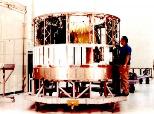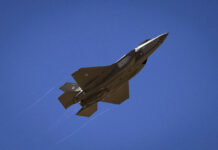 The amazing story of how our supersecret, Cold-War spy satellites took photos of the Soviet empire and dropped them to Earth, all without the help of computers, bandwidth, or digital cameras:
The amazing story of how our supersecret, Cold-War spy satellites took photos of the Soviet empire and dropped them to Earth, all without the help of computers, bandwidth, or digital cameras:
Here’s your mission, should you choose to accept it: build a camera that can take high-resolution photographs of the Earth from orbit and return them to the Central Intelligence Agency. There’s only one catch: you don’t get to use a computer or a single kilobyte of network bandwidth.
That’s the task that the United States government gave to a group of engineers at the optical instruments company Perkin-Elmer in Danbury, Connecticut at the height of the Cold War. It was October 1966 and the new development of the new satellite system, Hexagon, was underway. The project was a follow-on to very successful Corona satellite program and a complement to the higher-resolution Gambit satellite.
All these programs required 315,000 feet of film to be dropped in re-entry vehicles from orbit andretrieved in mid-air by U.S. forces. Gambit and Hexagon were declassified late this year, and its engineers were profiled this week by the Associated Press.
Hexagon was known as “Big Bird” and up to 1,000 Perkin-Elmer employees worked on the program during its peak in the 1970s. Almost nothing was known about the program, except for scraps of information that leaked out to reporters. For example, in 1977, the AP reported, “At present, the United States has only one Big Bird reconnaissance satellite at a time in orbit. If the Big Bird were to be destroyed by surprise attack, it might be months before the Air Force could replace it.” It was also known by the likes of William Safire that our satellites could “read the license plates on the cars of Kremlin officials.” But what was known was mostly lore: “the American Big Bird… is said to be able to photograph from 100 miles up people walking the streets of Moscow.”
In this case, though, the reality is more interesting than the legend. Our satellite programs were ridiculous collaborations between optical specialists like the Perkin-Elmer researchers, Lockheed Martin’s satellite makers, Kodak’s film creators, and the Air Force’s pilots. Check out the AP’s description of the program and note the many points of virtuosity.
From 1971 to 1986 a total of 20 satellites were launched, each containing 60 miles (100 kilometers) of film and sophisticated cameras that orbited the earth snapping vast, panoramic photographs of the Soviet Union, China and other potential foes. The film was shot back through the earth’s atmosphere in buckets that parachuted over the Pacific Ocean, where C-130 Air Force planes snagged them with grappling hooks.
All of this is now detailed in the National Reconnaissance Office’s declassification reports about Hexagon, which include a 72-page overview produced in 1978 and marked TOP SECRET. I’ve pulled out some of the most fascinating diagrams from the Hexagon overview. For some reason, the hand-lettered proto-Powerpoint drives home to me how long ago we developed this satellite photo capability. We could take photos of Earth from space before we could do desktop publishing.
There are so many interesting things about Hexagon — and our spy satellite program generally — that it’s hard to pick out what to highlight out of the hundreds of pages of history. Here are five things that stick out to me.
1. While Apollo may have stolen all the glory, the real humans-in-space success story is the satellite program. While we’ve never gone back to the moon, there are nearly 1,000 known satellites circling the Earth right now. Each Hexagon, of which there were 20, was nearly as big as NASA’s Spacelab.
2. Some historians, at least, believe that spy satellites helped keep the Cold War cool. By providing planners with some information about what was going on behind the iron curtain, they kept the fever dreams of our decisionmakers in check. “At the height of the Cold War, our ability to receive this kind of technical intelligence was incredible,” space historian Dwayne Day told the AP. “We needed to know what they were doing and where they were doing it, and in particular if they were preparing to invade Western Europe. Hexagon created a tremendous amount of stability because it meant American decision makers were not operating in the dark.”
3. The technical feat of creating a system to monitor the earth at 2-foot resolution without using computers’ calculating power is stupendous. The Perkin-Elmer contractors did the math — and the drawing — by hand. The satellite also had almost no bandwidth. The images the system created had to be delivered back to earth by what must be the most elaborate sneakernet ever devised. The photographs were dropped back onto our planet in the Mark 8 reentry vehicle and then picked up by American ships.
4. Infighting between the CIA and the Department of Defense’s National Reconnaissance Office nearly killed off the mission. It’s fascinating to think that there were multiple competing satellite reconnaissance programs housed within the dark arms of the US government. The Cold War bred a ton of new technology out of the most byzantine bureaucracy.
5. This was an exercise in preposterously complex sandcastle building. All the work went into satellites that were temporary. Early missions lasted 30 days; the longest lasted 180 days. They made what they did knowing the earth’s atmosphere would burn it up, leaving nothing behind but classified photographs and some old men with great stories at the Danbury Mall food court.
“My name is Al Gayhart and I built spy satellites for a living,” one engineer says.
Now we know how.
{The Atlantic/Matzav.com Newscenter}












This is just the tip of the iceberg.